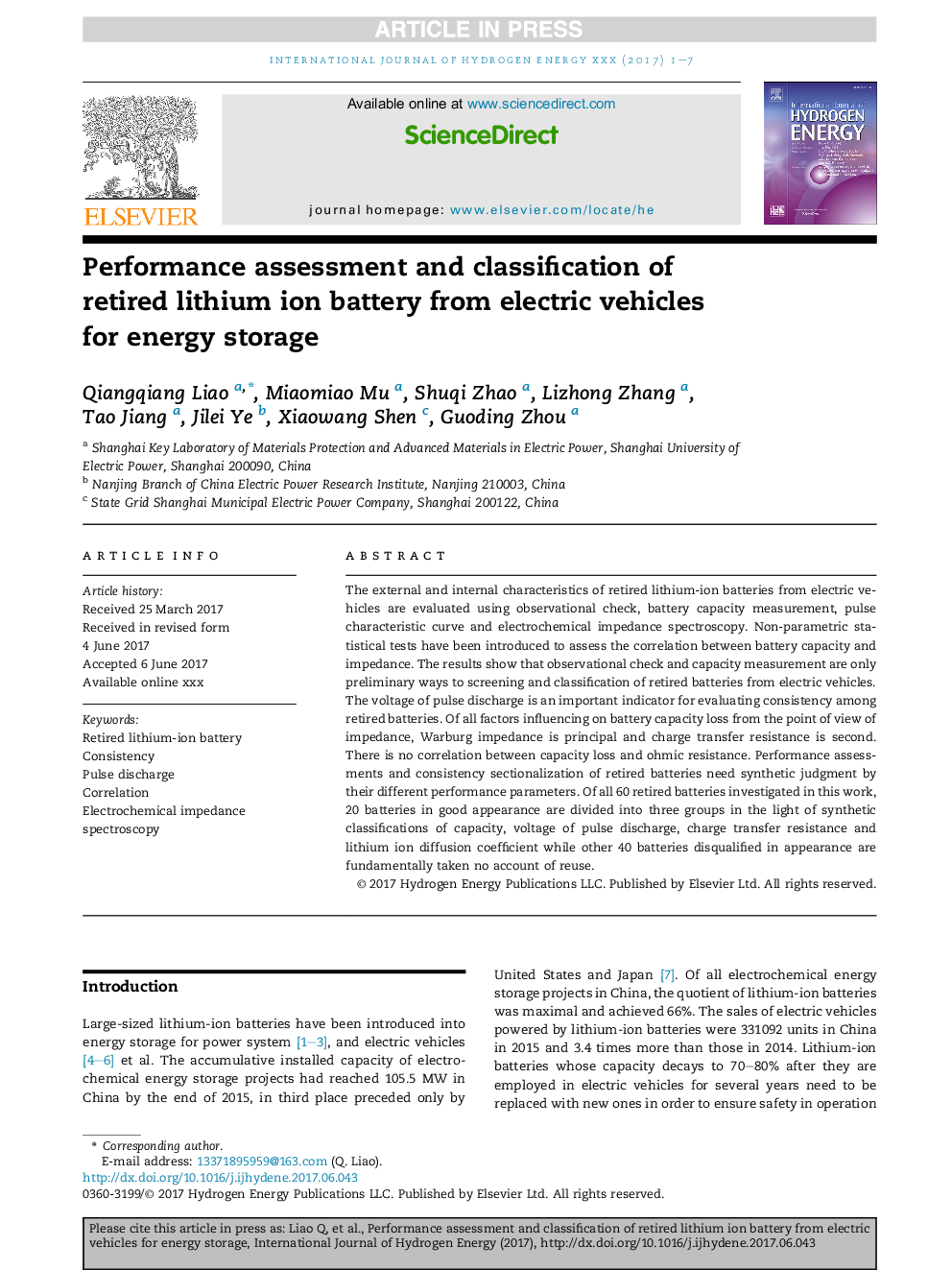| Article ID | Journal | Published Year | Pages | File Type |
|---|---|---|---|---|
| 5147011 | International Journal of Hydrogen Energy | 2017 | 7 Pages |
Abstract
The external and internal characteristics of retired lithium-ion batteries from electric vehicles are evaluated using observational check, battery capacity measurement, pulse characteristic curve and electrochemical impedance spectroscopy. Non-parametric statistical tests have been introduced to assess the correlation between battery capacity and impedance. The results show that observational check and capacity measurement are only preliminary ways to screening and classification of retired batteries from electric vehicles. The voltage of pulse discharge is an important indicator for evaluating consistency among retired batteries. Of all factors influencing on battery capacity loss from the point of view of impedance, Warburg impedance is principal and charge transfer resistance is second. There is no correlation between capacity loss and ohmic resistance. Performance assessments and consistency sectionalization of retired batteries need synthetic judgment by their different performance parameters. Of all 60 retired batteries investigated in this work, 20 batteries in good appearance are divided into three groups in the light of synthetic classifications of capacity, voltage of pulse discharge, charge transfer resistance and lithium ion diffusion coefficient while other 40 batteries disqualified in appearance are fundamentally taken no account of reuse.
Related Topics
Physical Sciences and Engineering
Chemistry
Electrochemistry
Authors
Qiangqiang Liao, Miaomiao Mu, Shuqi Zhao, Lizhong Zhang, Tao Jiang, Jilei Ye, Xiaowang Shen, Guoding Zhou,
